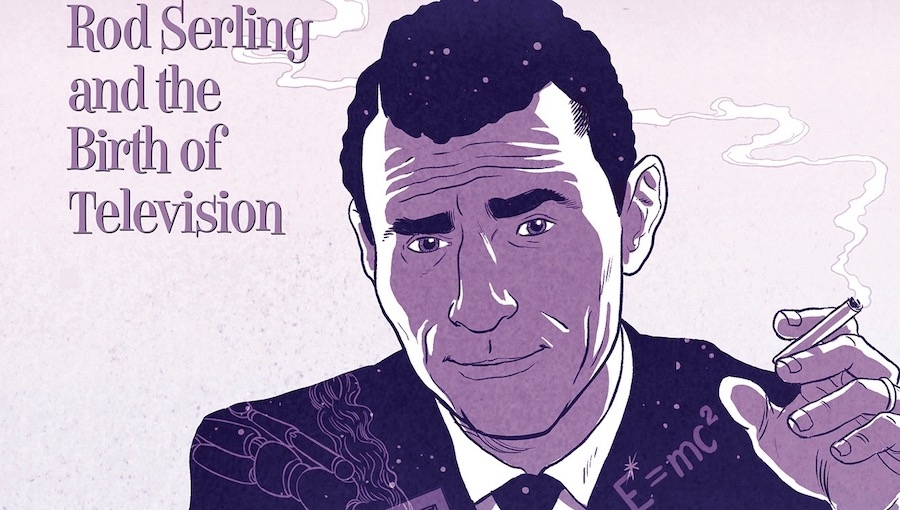The Twilight Zone has been cited by countless writers and directors as a major influence in television and the science fiction genre as a whole. For the past 50 years, its eerily poignant messages have remained relevant in the social and political worlds. But for its popularity, the man behind the project remains mostly a mystery. Rod Serling, a face any fan of the show could place, carefully crafted an image as an impartial observer, but who was he when the lights went off? The Twilight Man: Rod Serling and the Birth of Television seeks to shine a light on the life of television’s “angry young man.”
While the story focuses on all of Serling’s career and not just the show that took the world by storm, it’s certainly the centerpiece. The Twilight Zone, for those unfamiliar, was a science fiction anthology show first released in 1959. The show, while ostensibly about aliens and magic, frequently dived into the heart of major social issues plaguing the United States at the time. To this day, episodes like “Time Enough to Last” and “Eye of the Beholder” are still referenced in modern media.
Written and illustrated by Koren Shadmi, it’s clear from the beginning that The Twilight Man is a work of passion. Unlike the usual biography, Koren uses The Twilight Zone as a framing device to allow the character of Rod Serling to share his own life story. It’s a strange set up that fits someone as surreal as Mr. Serling. Despite this, Shadmi takes a very honest and neutral look at him. The book doesn’t shy away from Serling’s faults as a person while still recognizing the incredible work he did with his life.
The art style wasn’t what I was expecting when I picked up the graphic novel. I’ve spoken in the past about how overly detailed faces can quickly enter the uncanny valley, and that issue definitely crops up a few times (usually when a character is showing a lot of teeth). That being said, the art grew on me as the book went on. The black-and-white style was certainly meant to emulate The Twilight Zone, and some creative imagery made the art come into its own.
I would have liked to see Shadmi take the surreal elements of the story even further; the panels that stand out are the ones where he allows a little magical realism to flow into the page. Unfortunately, the most mystical elements are relegated to the interludes that open each chapter. That being said, Serling’s personality shined through even the duller sections of the book, and I never struggled to finish a chapter.
Rod Serling changed the world in more ways than we can count. There isn’t a single episode of The X-Files, Black Mirror, or American Horror Story that doesn’t owe its existence to this creative mind. As The Twilight Zone ages, I have this fear that people will forget the impact it had on the world. I want people to remember the show and the man behind it. And, in a funny way, I think that The Twilight Man is how Rod Serling would want his story to be told. His stories were all about showing the complexity of the world around us, and so I can think of no better legacy than to represent him as the complicated man that he was. Pick up The Twilight Man: Rod Serling and the Birth of Television if you’re interested in sci-fi television or the man behind its rise.
Creative Team: Koren Shadmi (Writer and Artist)
Publisher: Humanoids
Click here to purchase.

